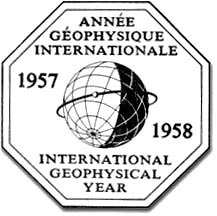International Geophysical Year
 The International Geophysical Year (IGY; ), also referred to as the third International Polar Year, was an international scientific project that lasted from 1 July 1957 to 31 December 1958. It marked the end of a long period during the Cold War when scientific interchange between East and West had been seriously interrupted. Sixty-seven countries participated in IGY projects, although one notable exception was the mainland People's Republic of China, which was protesting against the participation of the Republic of China (Taiwan). East and West agreed to nominate the Belgian Marcel Nicolet as secretary general of the associated international organization.
The International Geophysical Year (IGY; ), also referred to as the third International Polar Year, was an international scientific project that lasted from 1 July 1957 to 31 December 1958. It marked the end of a long period during the Cold War when scientific interchange between East and West had been seriously interrupted. Sixty-seven countries participated in IGY projects, although one notable exception was the mainland People's Republic of China, which was protesting against the participation of the Republic of China (Taiwan). East and West agreed to nominate the Belgian Marcel Nicolet as secretary general of the associated international organization.The IGY encompassed fourteen Earth science disciplines: aurora, airglow, cosmic rays, geomagnetism, gravity, ionospheric physics, longitude and latitude determinations (precision mapping), meteorology, oceanography, nuclear radiation, glaciology, seismology, rockets and satellites, and solar activity. The timing of the IGY was particularly suited for studying some of these phenomena, since it covered the peak of solar cycle 19.
Both the Soviet Union and the U.S. launched artificial satellites for this event; the Soviet Union's ''Sputnik 1'', launched on October 4, 1957, was the first successful artificial satellite. Other significant achievements of the IGY included the discovery of the Van Allen radiation belts by Explorer 1 and mid-ocean submarine ridges, an important confirmation of plate-tectonic theory. Provided by Wikipedia
-
1